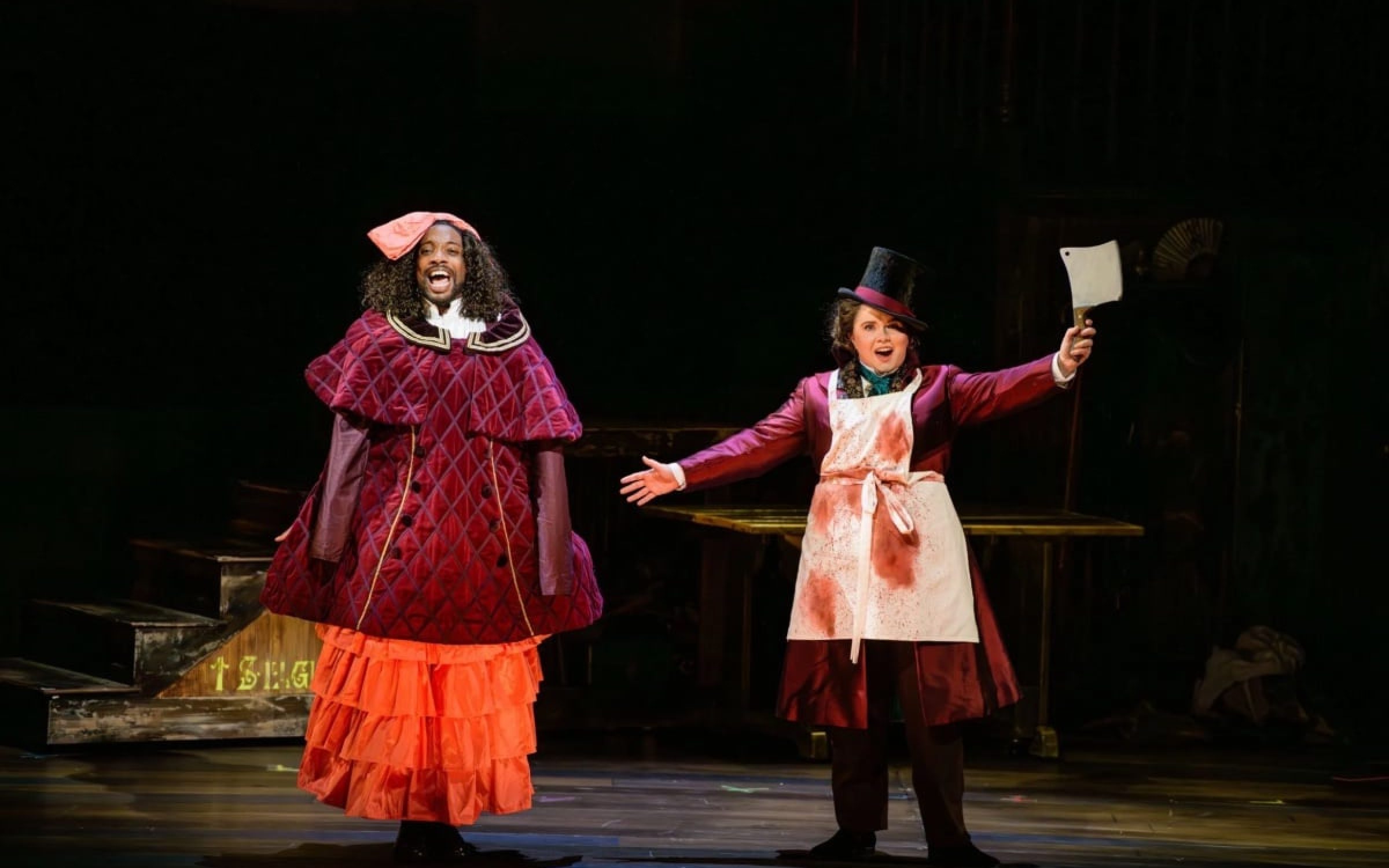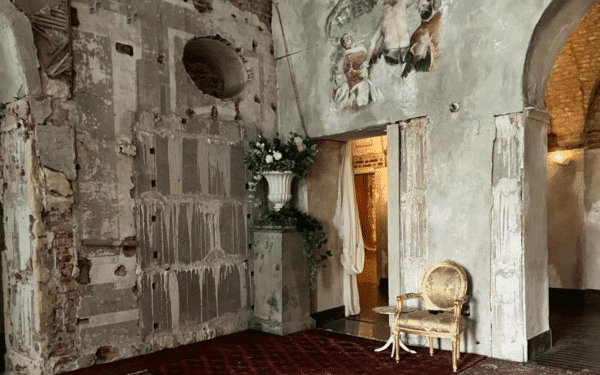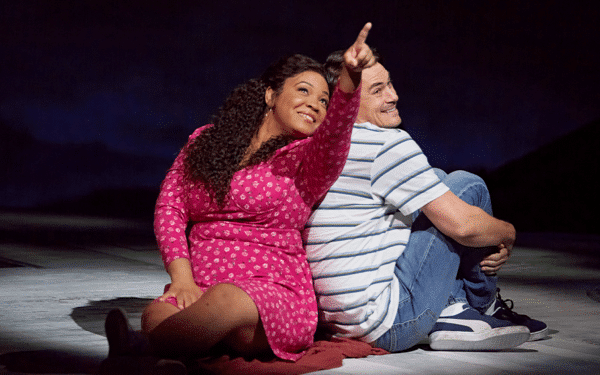“Here we are again!”. The catchline of 19th century English music hall star, comedian, drag artist and singer Dan Leno, given a leading role in Kevin Puts opera, Elizabeth Cree, about The Limehouse Golem.
Cheery subject for an upstate New York audience, unaccustomed to finding their Lake Otsego motels strewn with throat-slit corpses, or their library volumes bookmarked by the private member of the Hebrew scholar, Solomon Weil.
As the supposed killer, John Cree (spoiler alert, it isn’t him) sings, “Blessed to have his …s sliced twice. First at birth, again at death”. Ouch!
For those readers who haven’t yet fainted or wretched, hang on in there. There is worse to come. As the Golem, based on the real-life Jack the Ripper, slaughtered he removed eyes – in case they bore the imprint of the killer’s face – disembowelled, and in one instance committed necrophilia. All done in the name of releasing troubled souls from their earthly misery.
Puts composed the music, Mark Campbell wrote the libretto, based on English author, Peter Ackroyd’s 1994 book, The Trial of Elizabeth Cree, and subsequent 2016 horror flic, The Limehouse Golem, starring Bill Nighy as the persistent Inspector Kildare.
The opera, commissioned by Philadelphia Opera – clearly on the hunt for a popular seat filler – premiered in 2017 and was generally well received. It is delivered in a taught 100 minutes with no interval and features no fewer than 29 scenes.
Director, Alison Moritz and set designer Edward T. Morris earned a Congressional Medal of Honour for presenting all 29 of them seamlessly. No break in the action.
Courtrooms whirled into music halls, the British Library’s Reading Room, London’s slums, the Crees’ unhappy home or a cell in Camberwell Prison in a trice, with manic skill.
The whole Glimmerglass production team deserves a shout out for their “edge of the seat” presentation. That would be the audience on the edge of their seats. Not the production team.
Puts is an entirely unfashionable composer who risks his reputation with every opera he writes. He composes music that audiences actually like, with what seems like easy fluency. His established partnership with librettist, Campbell allows the music to tell the story of the words without clunks, road bumps. And the mood can change from music hall burlesque to dark horror at the flick of a deft key change.
His other operas, such as The Hours, successfully combine different narratives, each with its own sound world. Accessible opera without dumbing down.
We start at the end, with a prologue. Elizabeth Cree is receiving the last rites before being hanged for the poisoning of her husband, John Cree. A scrolling calendar stage right recorded the year – 1881, so changing time frames were flagged up and easily recognised.
Move to Elizabeth Cree’s trial and a lawyer’s question has the calendar spinning backward to her childhood, the loss of her abusive mother, who she stabs with a sail needle when she attacks “Lambeth Marsh Lizzie” for having her first period, and her fixation with music hall where she falls into the company of a troupe fronted by the famous Dan Leno.
Hired as a prompter, Lizzie quickly takes on acting roles, after impromptu replacing Little Victor Farrell when he meets his end in dubious circumstances. She appears as his tear-inducing orphaned daughter.
Meanwhile, the Golum kills prostitutes, an entire family, and the Jewish scholar. We see John Cree, a playwright, recording the murders in his diary and are led convincingly up a garden path by the librettist. (Psst….. it’s not he who is writing the diary!!!)
Inspector Kildare of the Yard muddles about interviewing aficionados of the British Library Reading Room, then annexed to the British Museum. The novelist George Gissing, Dan Leno and even Karl Marx are interviewed. Marx has a terrific defence line. “My hands are not red!”. That would be a blood reference, not politics.
Elizabeth, now a star, marries John Cree, but the marriage is unhappy, and she hires a former music hall colleague, Aveline Mortimer, as a servant and to – crudely – have sex with John, “relieving Elizabeth of her conjugal duties”.
As Elizabeth is convicted of the murder of her husband and hanged, it emerges that she wrote the diaries and is, in fact, the Golem.
A show is staged by Dan Leno, starring the highly adaptable Aveline Mortimer, depicting Elizabeth’s hanging, but Mortimer falls off the scaffold and is killed. The show must go on, as Leno intones, “Here we are again!”.
This is, to put it mildly, a taught precis. Those who prefer more grisly detail click here.
Tara Erraught, the Irish mezzo soprano, this year’s Glimmerglass Artist in Residence, performed the role of Elizabeth Cree. I last heard Erraught sing Cinderella in Massenet’s Cendrillon in Paris in 2022. She was brilliant then and, if anything, the two intervening years have improved her sense of theatre.
Erraught bedazzled as Cree. I was invited to the dress rehearsal, which went flawlessly – at least I thought so – and her opening performance three days later was even more compelling. Able to transition from rough and tumble Lambeth Marsh Lizzie to the somewhat haughty Mrs Cree, perform music hall burlesque and pull off the highly charged exchanges with her husband and Inspector Kildare. Comically, Kildare appeared in the final scene in the Reading Room sporting a Sherlock Holmes deerstalker.
The young Lambeth Marsh Lizzie was represented by the presence of a waif-like child who was onstage alongside Erraught as she sang the lines. Beautifully carried off.
New York tenor, Christian Mark Gibbs gave us a convincing Dan Leno, full of music hall humour and vim. The role, as Elizabeth’s mentor, demands pizzaz, humour and deep human sympathy. Gibbs covered the emotional spectrum convincingly.
For all its skin-flic horror, this Puts’ work is a worthy addition to the operatic canon. A great entry point for anyone wary of the likes of that other well-known “one-acter”, Schoenberg’s Von heute auf morgen, a fascinating piece about a wife who changes from lingerie into a housecoat. For an hour and a half.
The Glimmerglass Festival Orchestra under conductor Kelly Kuo, delivered the score with considerable punch. Kuo is currently music director of the Reno Chamber Orchestra and performs with many opera houses scattered across the US, including Des Moines Metro Opera, about which more in a future column.
Because it’s Glimmerglass, the cast is largely made up of young artists, all determined to act their socks off and sing their hearts out. No exception here. That’s the joy of this festival.
“Here we go again!” Over the George Washington Bridge, follow the New York State Thruway, follow the Catskills, we’re off to see the festival, the wonderful festival of Glimmerglass.
Just retracing last year’s route, as suburban malls slowly make way to upstate wilderness, the spirits rise. Glimmerglass is a Wiz, if ever a Wiz there was.
The Alice Busch Theater stands proudly on the northern bank of Lake Otsego, entirely on its own. A temple to opera. Worshippers don’t turn up. They flock. 918 of them for each performance. This year a small outdoor stage has been added to allow previews à l’herbe.
Artistic director, Rob Ainsley, had set the theme as “Identity and Illusion”. Disguises, plays-within-plays, mistaken identities and whodunnits. Scope for fun, frolics and tragedy.
The four main stage performances span the history of opera. Francesco Cavalli’s La Calisto, (1651), Leoncavallo’s Pagliacci (1892) – the longer version. Usually, the tragedy is to be viewed as part of a double bill, the other half being Mascagni’s Cavalleria Rusticana. ‘Cav and Pag’. A mistake, in my view, as the tragedy of Pagliacci is so moving that it needs time to absorb on its own.
Then it was “follow, follow,” back to …… Britain. What? Gilbert and Sullivan’s The Pirates of Penzance (1879) and, of course, Elizabeth Cree (2017).
Musical Director, Joseph Colaneri, conducted Pagliacci, and Pirates. Colaneri lives his operas. Before the Pagliacci performance there was a taster on the outdoor stage. Singers performed a short comedia and mingled with the crowd. Colaneri delivered a fascinating introductory talk, setting the work in the context of its time.
Pirates was a rollicking hoot, Colaneri pacing Sullivan’s score perfectly. Too often G&S is seen by conductors as a race at Saratoga. The cast did their level best with faux Cornish accents, the reluctant policemen bobbed up and down satisfactorily, Rob Ainsley sported a pirate’s hat at his pre-performance introduction.
And Queen Victoria turned up at the end. To my amazement, instantly recognised by the audience who “oohed” as if she had returned from the grave.
The libretto calls for the senior copper to call on the pirates to surrender “in Queen Victoria’s name”. As they are all “members of the House of Lords gone wrong” – how topical is that? – having the old girl in widow’s weeds pitch up in person to re-ennoble them was a masterstroke. A bit like recruiting for Sir Keir Starmer’s first honours list.
In 2025, the festival’s 50th Anniversary, expect fireworks. A premiere of Derek Bermel’s The House on Mango Street, based on the same name book (1984 – and recently republished) by Sandra Cisneros. It is semi-autobiographical, telling the tale of a Mexican American girl’s struggles growing up in Chicago.
This promises much. At a preview we were treated to an aria, A House of my Own. Hit the link to Bermel’s website and you will discover next year’s audience is in for a lyrical treat.
Sondheim’s Sunday in the Park with George, along with Puccini’s Tosca, the pipeline talks, the everyday contact with artists bubbling with enthusiasm, eager to talk, the preview brunches, Lyrics on the Lawn, Young Artists’ Concerts….. They all make Glimmerglass 2025 unmissable.
Yellow Brick Roads are in short supply in these parts, so this Oz of opera festivals will have me following the famous New York Thruway once more next July. As Dan Leno would surely say, “Here we are again!”
Write to us with your comments to be considered for publication at letters@reaction.life





